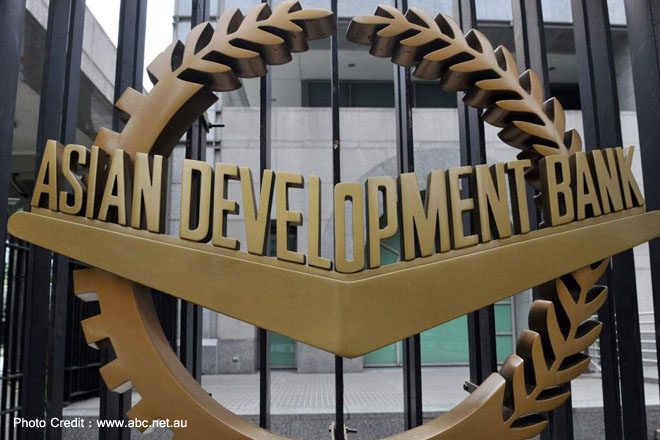By Shang-Jin Wei
Developing Asia is poised to grow at 6 percent this year, a slight uptick from the 5.8 percent figure in 2015, but looking ahead, five major economic risks loomon the horizon and the impact of each will be different across countries. The first is the future path of interest rates in the United States and the concomitant volatility in financial markets, which could affect regional economies via the trade, capital flow and exchange rate channels. online pharmacy buy spiriva inhaler with best prices today in the USA
buy ivermectin online https://www.scottsdaleweightloss.com/wp-content/uploads/2022/08/png/ivermectin.html no prescription pharmacy
In December, the Federal Reserve raised the Fedfunds target rate by a modest 25 basis points, bringing it to 0.375 percent. While the exact path of U.S. interest rates remains uncertain, the Fed has assured the public that going forward, the tightening cycle will be gradual. Current expectations indicate that the target rate will reach 3.
buy cymbalta online https://www.indcheminternational.com/wp-content/uploads/2022/08/png/cymbalta.html no prescription pharmacy
75 percent by the end of 2017. The hike in U.S. interest rates could crimp domestic demand and adversely affect exporters that have the U.S. as a primary market. The top five developing Asian economies most at risk on account of their large exports to the United States as a share of their GDP are Vietnam (15.4 percent of GDP), Hong Kong (15.
buy clomiphene online https://www.indcheminternational.com/wp-content/uploads/2022/08/png/clomiphene.html no prescription pharmacy
2 percent), Singapore (7.9 percent),Thailand (5.9 percent) and Malaysia (5.8 percent). Higher U.S. interest rates could also encourage foreign capital to pull back further from developing Asia and move to the United States. Indeed, foreign capital has been flowing out of the region since the second quarter of 2014, mostly in terms of portfolio and other investment. Malaysia, China, the Philippines, Thailand and Indonesia are most vulnerable to the risk of capital flow reversals. Capital outflows put pressure on the exchange rate. In 2015, many Asian currencies depreciated against the U.S. dollar, with regional currency values falling between 4 percent and 20 percent, raising import costs. Currency depreciation creates a further challenge for emerging economies with high levels of foreign currency-denominated debt.
online pharmacy buy advair rotahaler with best prices today in the USA
buy bactroban online https://www.scottsdaleweightloss.com/wp-content/uploads/2022/08/png/bactroban.html no prescription pharmacy
Looking at external debt indicators such as the short-term external debt-to-reserves ratio and the foreign liabilities-to-foreign assets ratio of the banking system, we find that Laos, Malaysia, Sri Lanka, Indonesia and Cambodia face the greatest risk. The next risk is continued slower growth and structural transformation of China, which could affect other economies through direct trade and indirect global value chain channels. Between 1986 and 2011, China expanded at an average rate of 9.9 percent per year. Since then, growth has markedly slowed, as the economy moves from high dependence on exports, investment and low-cost production toward increasing reliance on domestic consumption, the services sector, and innovation and high-value production. In 2016, we forecast China will grow at 6.7 percent. Given the country's size and importance as a trading partner for many of its regional neighbors, this growth moderation will have important economic implications. Indeed, China's slowdown will have consequences for countries that produce raw materials previously heavily in demand by China, as well as economies that produce intermediate goods for supply chains.
buy fildena online buy fildena online no prescription
Nonetheless, China's transition will likewise create new opportunities for many developing Asian economies. With rising wages, the country's household consumption will continue to grow, and other countries can take advantage of its large domestic market. In addition, as China's economy moves up the global value chain, many production activities may transfer to other countries with lower costs. Indeed, China's slowdown and structural transformation could provide opportunities for Vietnam, India, Indonesia, Singapore, Bangladesh and Myanmar. The next major economic risk is the continued softness in commodity prices, presenting fiscal and balance of payments challenges to commodity exporters. Persistently low global prices are crimping export revenues of commodity exporters such as Azerbaijan, Mongolia, Malaysia, Indonesia, Kazakhstan and Turkmenistan.
online pharmacy buy diflucan with best prices today in the USA
Unless other revenue sources are tapped, public spending for government services could suffer.
online pharmacy buy symbicort with best prices today in the USA
By contrast, commodity importers such as Pakistan, Palau, Maldives, India and South Koreaare benefitting from lower prices. The fourth risk relates to El Nino and other extreme weather events causing severe droughts in some developing Asian economies, which may later turn into flooding if followed by La Nina.
buy stendra online https://www.scottsdaleweightloss.com/wp-content/uploads/2022/08/png/stendra.html no prescription pharmacy
Abnormally dry conditions are expected to continue in Southeast Asia –a key supplier of rice, palm oil and natural rubber – particularly in Indonesia, Philippines, Thailand and Vietnam. Likewise, the early-planted wheat in India is emerging under mixed conditions due to dryness in the main producing region. Another weather-related shock is Dzud, particular to Mongolia, which is a harsh winter condition leading to reduced accessibility or availability of pastures, and ultimately to significant livestock mortality during winter and spring. The final risk has to do with elections and other geopolitical factors that could generate policy uncertainty and less favorable business climates in some countries.
online pharmacy buy abilify with best prices today in the USA
Elections or changes in government are expected in Hong Kong, India, Mongolia, Myanmar, the Philippines and South Korea. In addition, Muslim sectarian strifebetween Saudi Arabia and Iran could spill over to Asia, particularly in Pakistan, where the conflict between the two Islamic groups is deep.
buy diflucan online https://www.indcheminternational.com/wp-content/uploads/2022/08/png/diflucan.html no prescription pharmacy
While these five factors are major risks that will affect many countries, the exact effect could vary by countries.
buy vilitra online https://greendalept.com/wp-content/uploads/2023/08/png/vilitra.html no prescription pharmacy
Governments need to be mindful of these risks, and undertake structural reforms and prudential measures to mitigate the associated negative consequences.
buy tamiflu online https://greendalept.com/wp-content/uploads/2023/08/png/tamiflu.html no prescription pharmacy
(Shang-Jin Wei is Chief Economist at the Asian Development Bank)

